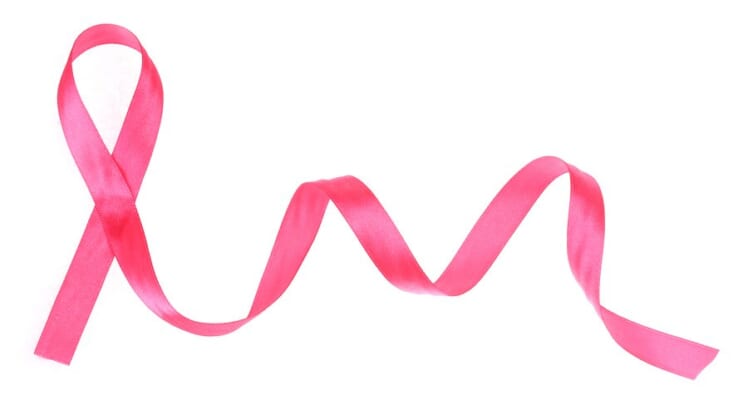
Why do I need to give myself a breast self examination?
Finding a tumor before the cancer has spread to other parts of your body can mean the difference between life and death. Many breast cancers are first detected by women themselves — and according to the American Cancer Society (ACS), women who are attuned to changes in their bodies are more likely to spot a suspicious lump. New guidelines issued by the ACS say that while monthly self-exams are less effective than first thought and are no longer emphasized, examining your breasts can help you stay in touch with what’s normal for you. It’s best to begin around age 20, so you can learn early on what your normal breast tissue feels like, but it’s never too late to start. Even if you examine your breasts regularly, however, you should still have your doctor or gynecologist examine your breasts once a year.
When is the best time to do the exam?
Examine your breasts at the same time each month. The best time is usually a few days after your period, when your breasts are least likely to be tender or swollen. If you no longer menstruate, pick a day that you can remember easily, like the first of the month.
How do I examine my breasts?
Some women hesitate to do a self-exam because they don’t know what they’re looking for. Generally, malignant lumps are firm, discrete and immobile. However, many malignant tumors do not fit this description, so any change you feel should be evaluated by a physician. It’s important to remember that the old saying, “if it hurts, it’s not cancer” is not true. Also remember that if your mammogram is normal and you find a lump, you should still be seen by a doctor because not all lumps show up on mammograms.
One breast surgeon in the San Francisco Bay Area says her patients have lots of reasons for avoiding self-exams: they don’t know how, their breasts are too lumpy, they don’t have time, or they’re too scared of finding something. Some physicians say that women should do whatever kind of exam they’re comfortable with, as long as they get to know what their breasts feel like normally. Don’t, in other words, set yourself up to do something so difficult and time-consuming that you don’t do it at all. In that spirit, here are a few guidelines:
1. Stand in front of a mirror with your arms at your sides. Look for any changes in the size, shape, or skin of your breasts, including dimples or scaly patches. Check for discharge. Any bloody discharge should be evaluated by a doctor right away.
2. Clasp your hands behind your head and again look for changes in the size, shape, and contours of your breasts. Then check again with your hands on your hips, bending slightly toward the mirror with your elbows and shoulders pressed forward.
3. Do this next part lying on your back in bed, where you have better access to the undersides of your breasts. Lying down also spreads the breast evenly and thinly, making any abnormalities in the tissue easier to feel.
With your left hand behind your head, use the fingertips of the three middle fingers of your right hand to feel for lumps under the skin of your left breast. Use small, overlapping, circular motions and start just below your left collarbone, pressing your fingers on a small area the size of a quarter. Using various amounts of pressure, feel both on the surface and deep in the breast tissue for lumps that differ from the overall consistency of the breast in any way. Continue to check the breast following one of the patterns shown in the diagram. Make sure you cover everything from the collarbone to the bottom of the breast, and out to and including the armpit. Move around the breast in an up and down pattern (experts say this is the most complete and effective way to examine the entire breast). Switch hands and examine the right breast in the same way.
What should I do if I find a lump or change in my breast?
It’s normal for breasts to have some lumps, or for one to be slightly larger or lower than the other. Ideally you’ll want to get to know every idiosyncratic lump and bump in your breasts, so you can recognize anything unusual. Suspicious lumps may be particularly hard to distinguish if your breasts contain fibroids or cysts, usually harmless masses that occur more frequently as you age. Searching for irregularities can be scary and frustrating, especially since doctors strongly recommend that you have anything suspicious checked out.
Make an appointment with your doctor if you do come across something that seems atypical. If what you’ve noticed is indeed suspect, he or she will probably advise that you have a biopsy. This involves taking a small sample of tissue from the mass for closer analysis. But even so, it won’t be time to worry; 80 percent of breast lumps that are biopsied turn out to be harmless.
The American Cancer Society recommends that women have an annual mammogram starting at age 40 — and women at high risk of breast cancer even sooner. In addition to an annual mammography, women at high risk for breast cancer should also get magnetic resonance imaging. Women who are high risk include those with a BRCA1 or BRCA2 gene mutation or a first-degree relative with such a mutation, women who have had radiation chest therapy between the ages of 10 and 30, or women with a genetic disease such as Cowden syndrome or Li-Fraumeni syndrome.
Last Updated: March 11, 2015
Breast Cancer Health Library Copyright ©2015 LimeHealth. All Rights Reserved.
